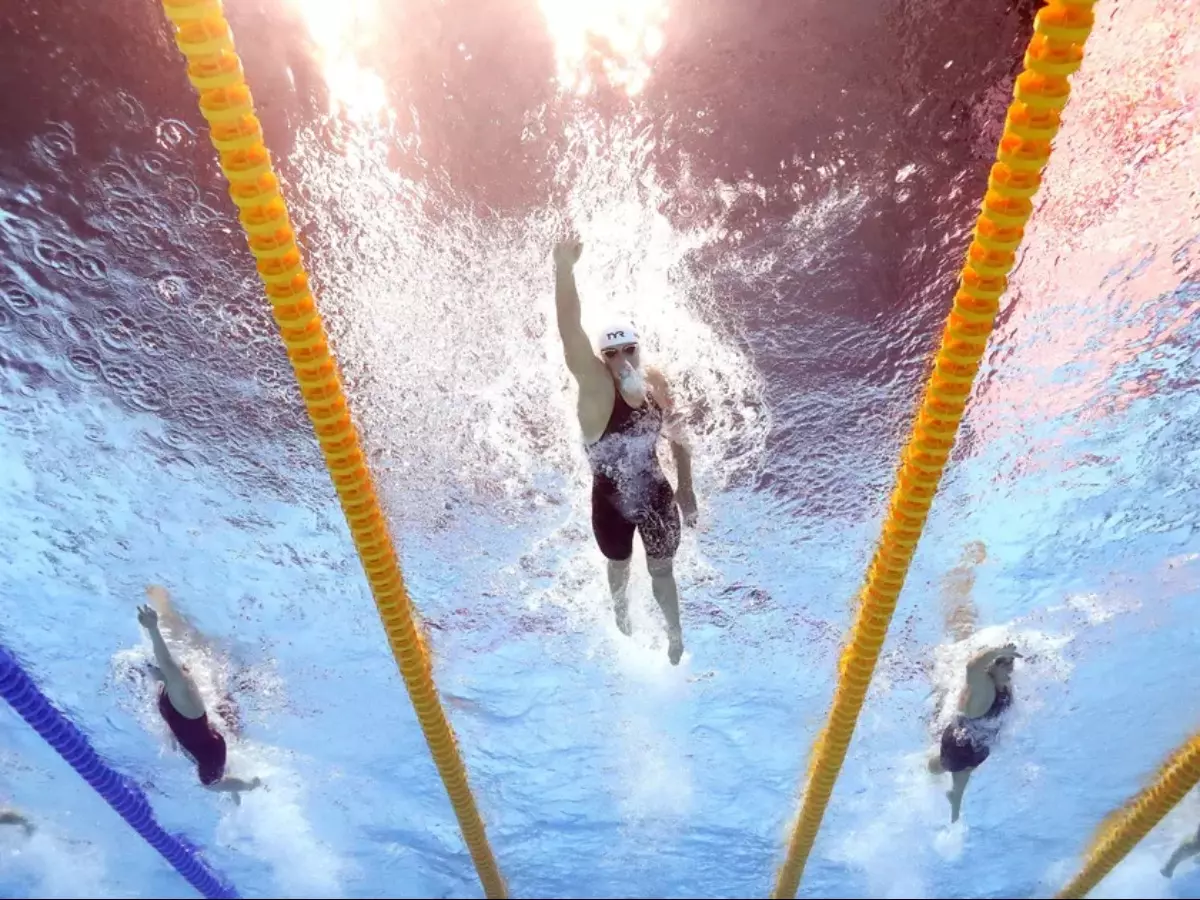Explained: How Will The New Transgender Swimming Policy Works
Starting on Monday, FINA, the organisation that oversees swimming around the world will effectively forbid transgender women from competing in women's sports. Instead, as part of its new policy, it calls for the formation of a working group to create an "open" category for them in some events which could be held alongside men¡¯s and women¡¯s races.

Starting on Monday, FINA, the organisation that oversees swimming around the world will effectively forbid transgender women from competing in women's sports. Instead, as part of its new policy, it calls for the formation of a working group to create an "open" category for them in some events which could be held alongside men¡¯s and women¡¯s races.
FINA(F¨¦d¨¦ration Internationale de Natation) members widely adopted a new ¡°gender inclusion policy¡± on Sunday that only permits swimmers who transitioned before age 12 to compete in women¡¯s events.
 Fina.org
Fina.org
Only events and competitions recognised by FINA are covered by the policy. These consist of the Olympic Games and world championships. Who FINA considers eligible for a world record is affected by the rules as well. The sports events encompassed include Diving, Water Polo, Artistic Swimming, and High Diving and Open Water Swimming.
Why did the policy change, exactly?
According to FINA representatives, the goal of the policy is to guarantee fair competition in women's races. In spite of hormone therapy and testosterone decrease as part of their treatment, transgender men maintain their physical advantages, according to research cited by FINA.
¡°By 14 years or older, the difference between boys and girls is substantial. That¡¯s due to the advantages experienced due to the physiological adaptations in testosterone and the possession of the Y chromosome,¡± said Dr Sandra Hunter, an exercise physiologist who was part of FINA¡¯s panel looking into the issue.
 Fina.org
Fina.org
¡°Some of these physical advantages are structural in origin such as height, limb length, heart size, lung size and they will be retained, even with the suppression or reduction of testosterone that occurs in the transition from male to female.¡±
According to the new policy, male-to-female transgender swimmers (transgender women) are only permitted to participate in women's competitions if ¡°they can establish to FINA¡¯s comfortable satisfaction that they have not experienced any part of male puberty beyond Tanner Stage 2 (of puberty) or before age 12, whichever is later¡±.
Tanner Stage Two is the second of five stages of puberty. Boys can have completed stage 2 and reached stage 3 by the age of 12 or 13, while puberty timings vary depending on a variety of factors. It might be earlier or later in some circumstances. In stage 2, physical changes include genital development, hair growth around the penis and under the arms, and an increase in height that may cause growing pain to take place.
What is the policy for transgender men?
Given that there is no physical advantage gained, transgender men (female to male) are allowed to compete in men's sport.
However, in accordance with anti-doping standards, swimmers who are taking testosterone treatment or other anabolic chemicals as part of hormone treatment must acquire a Therapeutic Use Exemption.
 AFP/Representational image
AFP/Representational image
Athletes that are female-to-male transgender (transgender males) and do not use exogenous androgens are allowed to compete in the women's division. Whether or not they are suppressing their endogenous androgens, male-to-female transgender athletes (transgender women) can still compete in the men's division.
What is the certification process?
To participate in FINA competitions, all athletes must have their chromosomal sex verified by their national swimming federation.
Swimmers who identify as transgender must submit to FINA a detailed medical history as well as other documentation demonstrating their eligibility for the competitive category and their willingness to submit to a physical examination.
 Twitter
Twitter
The submission will be examined by an impartial expert, who will determine eligibility.
The testosterone levels of athletes can also be observed by FINA through random or targeted testing.
Swimmers who have not submitted a declaration of gender identity to FINA may also be the subject of investigations.
The Court of Arbitration for Sport accepts appeals from swimmers regarding any ruling.
LGBTQI+ take on the ¡®overhaul¡¯
The U.S based campaign group Athlete Ally said the policy is ¡°deeply discriminatory, harmful, unscientific¡± and out of line with the stance of the International Olympic Committee.
¡°The eligibility criteria for the women¡¯s category as it is laid out in the policy police the bodies of all women, and will not be enforceable without seriously violating the privacy and human rights of any athlete looking to compete in the women¡¯s category,¡± said Anne Lieberman, Director of Policy and Programs at Athlete Ally.
For more on news and current affairs from around the world please visit Indiatimes News.
